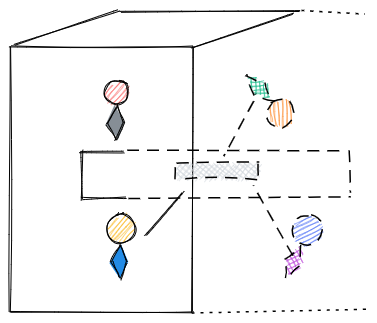Your Next Workplace - Office, Remote, or Resilience?

2020 presented many twists and turns for all of us, and there are more to come. In August 2017, I began to co-author a book on successful distributed agile teams with Johanna Rothman. Our first chapter was titled “Distributed Agile Teams Are Here to Stay.” We did not realize how prophetic that would be in 2020. Those who became “rapidly remote” because of the 2020 pandemic experienced something very different from the successful distributed teams of the past.
Because many people did not have a choice in going remote in 2020, they rapidly scrambled to find a way to survive and work online. Since few were prepared to go remote, many teams just tried to replicate their current practices online. As Johanna Rothman and I had pointed out in our book, this rarely works. You have to review the principles that originally created those practices and determine if you adapt the steps or recreate the practice in your new remote context.
However, there was little time to thoughtfully experiment in this rapidly remote environment. Schedules of family and work clashed daily. It was like shoving square pegs into round holes. Yet, many found a way to make work work in 2020.
2021 – The Year of Hybrid Remote
What is next for us in our world of work? We all will face new constraints:
- Some of our colleagues long for a return to the office.
- Some see new possibilities in remote work.
- Offices must be reconfigured to increase our safety but impede our collaboration.
- Schedules must shift to support social distancing and ensure we do not have everyone present.
While 2020 was the year of “remote work”, 2021 will be the year of “hybrid remote work”.

As a remote work advocate, you may think I’m thrilled with this possibility. I am not. I truly believe people should have a choice in how they work. For some, working remotely is NOT a good choice. For others (like me), remote work makes a great choice. But it is still a choice. The hybrid remote environment will be dictated more by safety and public health than by choice and connection.
So how can we navigate this new future of hybrid remote work? How can we bring more opportunities for choice into our daily work and lives? Currently, I see three important perspectives to consider:
- RESILIENCE
- INCLUSIVITY
- GENERATIVITY
About Resilience in Teams and Organizations
According to the Merriam-Webster dictionary, resilience characterizes “an ability to recover from or adjust easily to misfortune or change.” You probably feel your resilience knob has been cranked to 11 (out of 10) after 2020, but you may need to keep it set there for the next year. In the words of Douglas Adams, “Don’t panic.”
In our book, Johanna Rothman and I discussed three principles that could support the resilience of teams and organizations:
- Establish Acceptable Hours of Overlap
- Create Transparency at All Levels
- Practice Pervasive Communications
How Hours of Overlap Help with Resilience
In short, hours of overlap indicate the span of time where team members can collaborate with each other in ad hoc or formal ways. By understanding when people are available, you know when you can co-plan and co-develop. It also becomes a time to ask for help easily.
When some team members are outside the team’s hours of overlap, you might consider if they need different types of support to maintain their resilience:
- Do these time-isolated team members need documentation on certain procedures when known problems arise?
- Will they need a way to reach out to people outside their team who may be available?
- Under certain circumstances, do these team members need a way to reach out to other team members that may not normally be available at certain times?
- Are working agreements needed to provide this kind of support outside of hours of overlap on the team?
How Transparency and Pervasive Communications Help with Resilience
Communication becomes critical to maintain resilience. Otherwise, we encounter burnout with sustained stress. As shared in an August 2020 tweet thread by John Cutler: “Burnout impacts self-awareness … You need to talk about it, out in the open.”
In order to support this kind of open communication, your team and organizational culture should support openness of various forms. Being transparent about what is or is not working in teams makes it easier for individuals to share what is or is not working for them personally.
Having multiple forms of pervasive and honest communication about the organization amplifies the psychological safety for all. Being clear and open on how external challenges are impacting the business through multiple communication channels encourages employees to reach out in multiple ways when they need help.
What have you seen help improve the resilience of your teams and organizations? Let me know in the comments below.
Next, we’ll discuss steps to inclusivity when navigating our future remote hybrid world.
